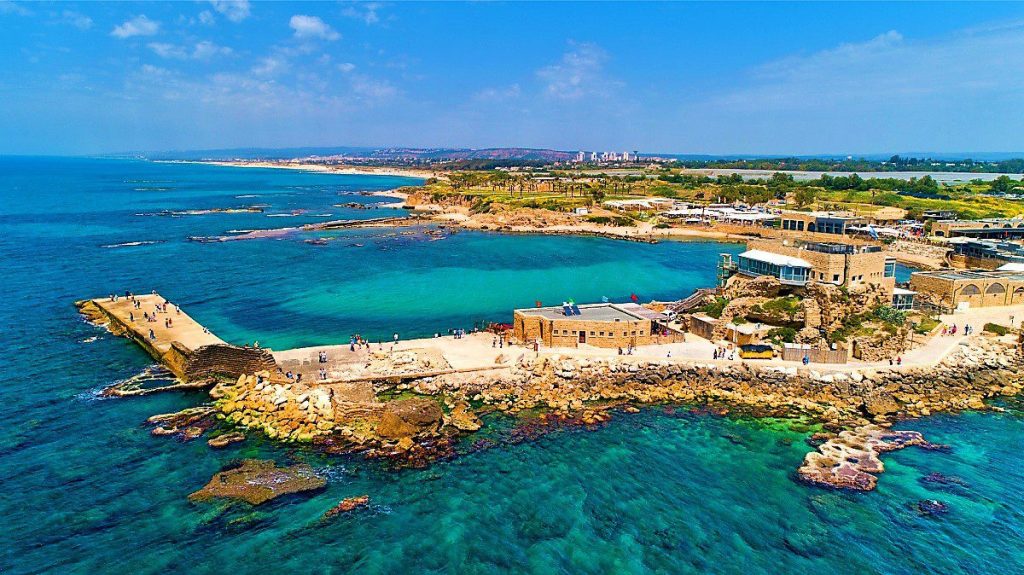Straton’s Tower was the Hellenistic city the preceded Caesarea. The Phoenician city, Stratonos Pyrgos (English: Straton’s Tower), is known largely because Herod the Great built Caesarea Maritima on its ruins. But still, the city became quite an enigma in the history of Palestine. Presumably, it was founded by Straton I, King of Sidon, who reigned from 376-361 BCE.

CAESAREA MARITIMA NATIONAL PARK THAT WAS BUILT ON THE RUINS OF STRATON’S TOWER
The Myth Regarding the Founding of the City
Also, the founding of the city may be represented on a cup now in the Louvre. The cup, acquired by the Louvre in the 1960s is of a technique and style associated with the 4th century CE. Moreover, the subjects are grouped in several scenes. Which three of them concern a certain Straton. First, there is a consultation with an oracle of Apollo. Second, a maritime expedition. And a dexiosis between Straton and Asklepios. In addition, there is a divine figure that seems to be the well-known Tyche of Caesarea. Thus the cup blends the founding of the Greek city of Straton’s Tower with that of Roman Caesarea. And making Straton the founder of the latter city.
First Historical Records of Straton’s Tower
Straton’s Tower was probably an agricultural storehouse. The earliest citation of Straton’s Tower is on a papyrus of the 3rd-century BCE., which records a visit by the Ptolemaic agent Zenon. The next mention is a passing reference by the geographer Artemidorus of Ephesus (ca. 100 BCE), quoted by Stephanus of Byzantium (in his entry for “Doros”). Lastly, was in the late 1st-century BCE., Strabon (16.2.27) noted that Straton’s Tower had an anchorage. The remaining citations are from the Roman period, well after Straton’s Tower had been replaced by Caesarea.
Josephus mentioned the earlier town several times in the context of events of Hellenistic Palestine, noting the rise of the local tyrant Zoilos in the 2nd-century BCE.; the subsequent incorporation of the town into the territory of Alexander Jannaeus; the freeing of the city by Pompey in 63 BCE.; its presentation to Herod by Octavian after Actium. And Herod’s founding of Caesarea at the site. But in the time of Herod, the city was in a state of decay, perhaps because of an Earthquake in 31 BCE.
Archaeological Remains
The town’s name suggests that a tower was a prominent feature. Therefore, attempts to identify Hellenistic period remains have focused on a round tower that is incorporated into the later Herodian city wall on the north side of Caesarea. The fact that the tower round suggests an early date to some archaeologists. But most consider the tower dated to the 1st century BCE. Also, Hellenistic jar-burial dating to the Hellenistic period was found under Herod’s palace. Excavations of a Roman synagogue revealed at lower levels “a large house […] covered by a considerable accumulation of Hellenistic pottery characteristic of the third and second centuries BCE.”
Later Historical Citings
Despite the absorption of Straton’s Tower by Caesarea, the name of the Hellenistic city survived well after its demise. Josephus, writing a century later, occasionally called Herod’s city “Straton’s Tower” with no reference to the Roman name. Pliny the Elder, writing a century and a half after the founding of Caesarea called the city “Straton’s Tower, the same as Caesarea”. Also the geographer Ptolemy, somewhat later, called it Straton’s Caesarea.